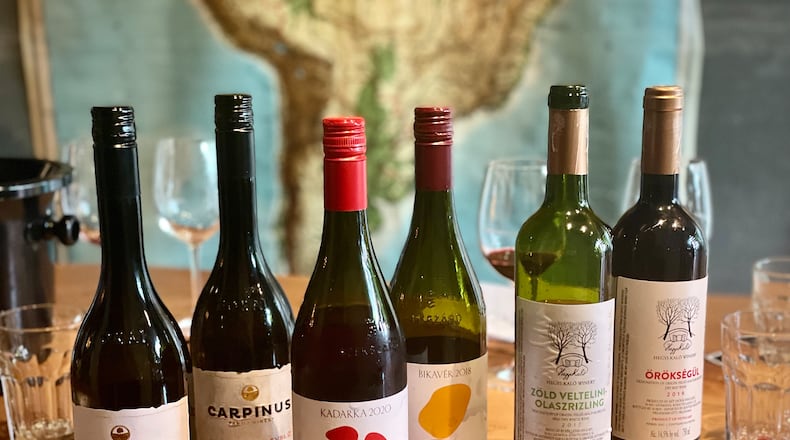Hungarian wines have not had a lot of market representation in the U.S., despite centuries of high-quality production.
Evidence of winemaking in Hungary dates back as far as A.D. 896, and Hungarian wine laws actually predate France’s own famed classification system.
The soil of Hungary was formed from hundreds of ancient volcanoes. Volcanic soil is valued for wine production, because it creates the so-called bad conditions (high drainage, poor fertility) that lead to grapes that are concentrated in aroma and flavor, intense in acidity, and which showcase great mineral character.
Regions in Sicily and the Willamette Valley in Oregon are renowned for their volcanic soils. So, why hasn’t Hungarian wine had more of a presence in the market?
“Hungary had a bad century,” said Travis Smith, whose Rooted Selections wine import company focuses on special wines from historic places.
Hungary’s wine regions suffered through the devastating effects of war in Europe throughout the first half of the 20th century. That was followed by Soviet occupation until 1990, a period during which a focus on quality production was lost, in favor of pumping out volumes of mediocre wine.
Thankfully, the 21st century has been better for Hungary, in terms of regaining quality wine production and championing historic grapes.
Here are three producers whose wines offer a true taste of Hungary:
Carpinus. Located in Hungary’s most famous wine region, Tokaj, Carpinus makes high-quality, dry white wines from the indigenous grapes furmint and harslevelu. The furmint is bright and refreshing, with tart citrus and melon fruit. The harslevelu is more floral and slightly richer in body, but equally delightful.
Sebestyen. For a red wine, seek out this label. The tiny winery, run by siblings Csaba and Csilla Sebestyen, is responsible for big strides made in the quality of wines in their home region, Szekszárd. If you are a fan of light-bodied chillable reds, try their Kadarka, a gulpable wine with juicy notes of cherry and hibiscus tea. Their Bikaver is a blend that is predominantly kekfrankos (aka blaufrankisch, if you cross over into Austria). Earthy, with warm spice and notes of forest berries, it’s a terrific red to pair with foods of the upcoming fall season.
Hegyi-Kaló. Natural wine lovers will rejoice in the mystical, wild wines of this producer. Using traditional methods, they allow their wines to age for years in Hungarian oak barrels, without additives or modern technology. Made from a blend of zoldveltelini (grüner veltliner) and olaszrizling, their white wine is fermented on the grape skins, yielding a deep golden color and rich, baked-apple aroma. Using grapes from the cooler region of Eger, they also make red blends dominated by kekfrankos. These wines hold intense notes of spiced plum, red rose and walnut, and are tiny production wines. If you can find them, grab them.
The Slaters are beverage industry veterans and the proprietors of the Expat and the Lark Winespace in Athens.
Sign up for the AJC Food and Dining Newsletter
Read more stories like this by liking Atlanta Restaurant Scene on Facebook, following @ATLDiningNews on Twitter and @ajcdining on Instagram.
About the Author
The Latest
Featured


